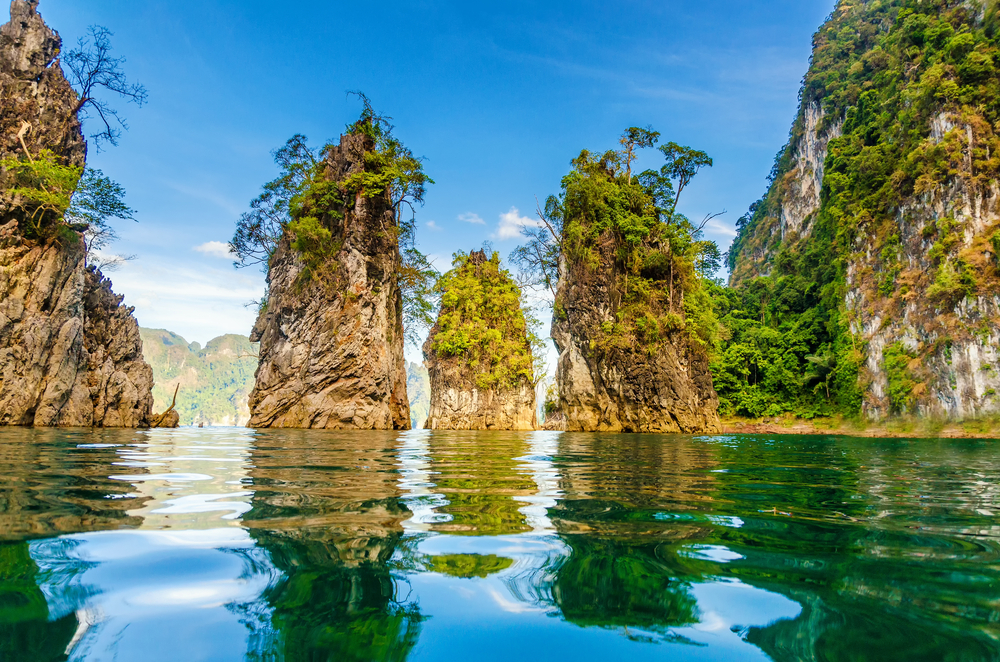Popular
Erawan National Park is a treasure trove of wildlife, where diverse species flourish in its lush habitats, from dense forests to sparkling streams.
Asian Elephant
As a symbol of Thailand’s wildlife, the Asian Elephant is a majestic sight within the park, embodying the wild and natural beauty of Erawan.
Gaur (Indian Bison)
The formidable Gaur, Asia’s largest bovine, roams the park’s more secluded areas, showcasing the rich biodiversity and the importance of conservation efforts.
Siamese Fireback
This striking bird, with its vivid plumage, is Thailand’s national bird and a highlight for birdwatchers exploring Erawan’s diverse avian habitats.
King Cobra
The formidable King Cobra, the world’s longest venomous snake, slithers through the park, an apex predator in its ecosystem.
Spectacled Langur
Characterized by its distinctive eye patches, the Spectacled Langur is a peaceful primate, contributing to the park’s biodiversity through seed dispersal.
Malayan Tapir
With its unique black and white patterning, the Malayan Tapir is a nocturnal feeder, playing a key role in the park’s ecological balance.
Leopard Cat
Smaller and more elusive than leopards, the Leopard Cat thrives in the park’s dense underbrush, a testament to Erawan’s pristine habitats.
Wild Boar
Omnivorous and adaptable, Wild Boars play a significant role in the ecosystem, impacting forest floor dynamics and serving as prey for larger predators.
Hornbill
Known for their large, colorful bills and unique nesting habits, hornbills are crucial for seed dispersal, enhancing the park’s forest regeneration.
Butterfly Species
Erawan is home to an array of beautiful butterflies, their colors and patterns a testament to the park’s ecological diversity and health.
Erawan National Park’s array of wildlife, from the majestic Asian Elephant to the vibrant butterflies, showcases the incredible biodiversity of Thailand’s protected areas.





























































































